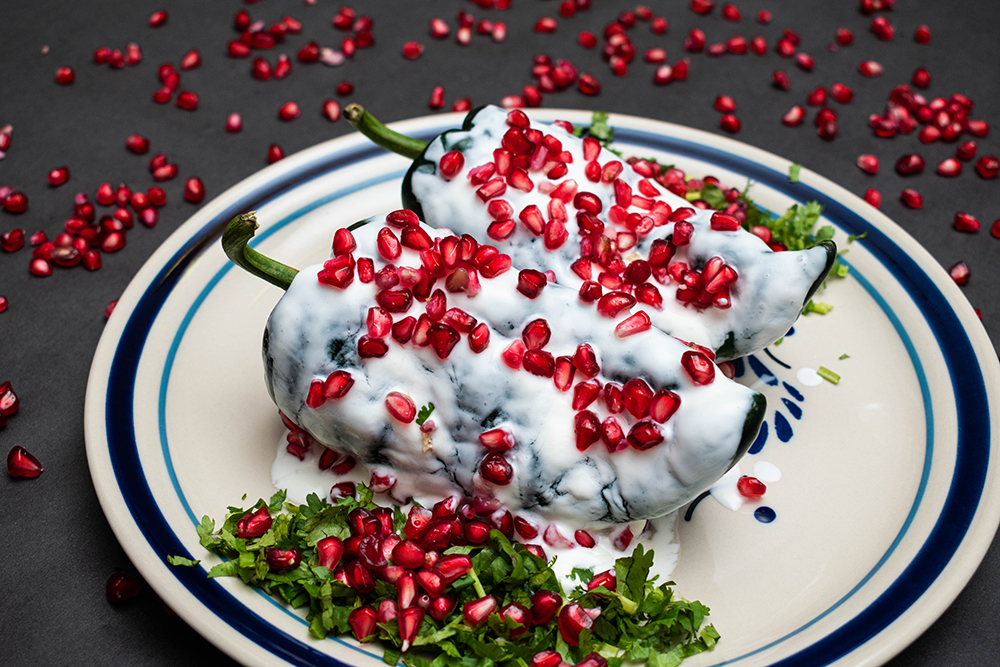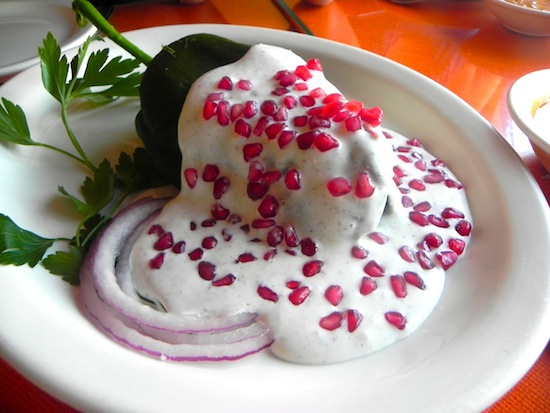In Mexican gastronomy, many traditional and delicious dishes are part of the great culinary heritage of the country. Undoubtedly, one of the most popular and exquisite is the chiles en Nogada. The colors in the recipe represent the same colors as the Mexican flag. It is a dish with a wide variety of ingredients. Also, there are several original versions of it.
Some sources indicate that chiles en nogada date from 1821 when Agustín de Iturbide signed the Act of Inde- pendence of Mexico and the Treaties of Córdoba. Ac- cording to this version, the Augustinian nuns from the Convent of Santa Mónica in Puebla, who, knowing that Don Agustín would be in that city to celebrate his birth- day (August 27), decided to make a dish that recalled the colors of Iturbide’s army flag, with which he en- tered Mexico City triumphantly.
Therefore, the nuns opted for green, white, and red. In addition, being precisely the month in which people harvest walnuts and pomegranates in that state, it oc- curred to them, after much thought, to make this won- derful dish.
The nuns took some poblano peppers, roasted them, peeled them, and cleaned them well inside. Then, they filled them with a hash rich in ingredients and flavors based on pork, tomato, onion, garlic, seasonal fruits, walnuts, almonds, pine nuts, and various spices.

All that remained was to prepare the sauce to cover the peppers. And what better than making a very orig- inal one based on fresh Castilla nuts? They got to work and the first thing they did was peel them perfectly.
Subsequently, they ground the nuts with fresh cheese and a little sugar. Once well ground, they mixed it with milk, added a bit of sherry and it was ready. That is, neither too thick nor too watery, with the perfect point to cover the peppers.
Now all that was left was to finish the dish. So they weathered the chiles with beaten eggs. Then, they fried them and arranged them on two separate plates. Finally, the peppers were bathed with the sauce and decorat- ed with red pomegranate seeds and parsley leaves, thus achieving the flag’s colors.
There is another origin version. According to the writ- er Artemio del Valle Arizpe, in Don Agustín’s regiment, there were three soldiers who had girlfriends in Puebla. They wanted to receive them with a dish decorated with the colors of their uniform, and the Mexican flag.
For the same reason, each woman looked for the in- gredient that had one of the flag’s colors. The girls did not want to resort to any recipe book. They prayed to the Virgen del Rosario and San Pascual Bailón to enlighten them. Then they started cooking and the result was what we know today.

Nowadays, in some restaurants you can ask for the chili without the weathering. In the end, each person is free to prepare and taste it as they please, but always keeping in mind that what they are eating is a modern variant.
The fame of chiles en nogada has spread, allowing them to be consumed outside of Puebla and all over the year. It is considered a seasonal dish because ingredi- ents such as walnut and pomegranate used to decorate it can only be obtained during the last days of July and until September.
TYT Newsroom



